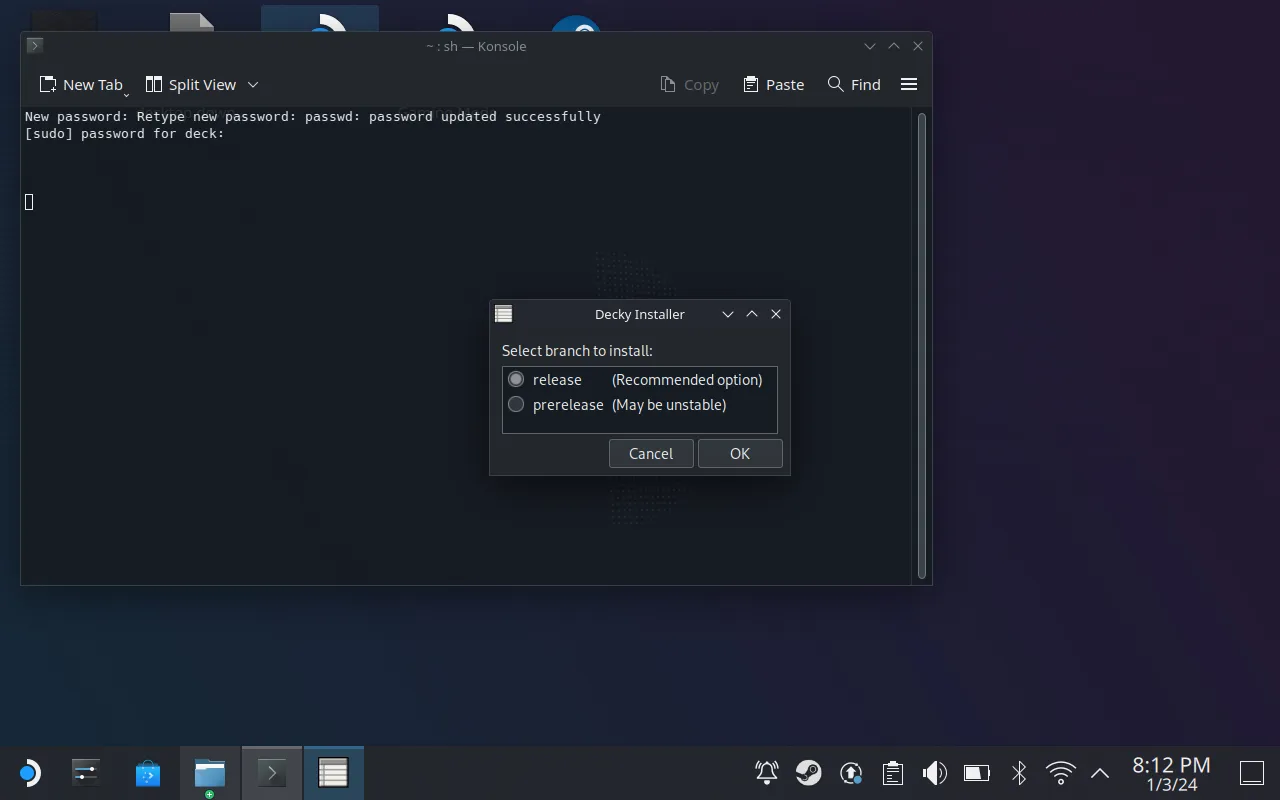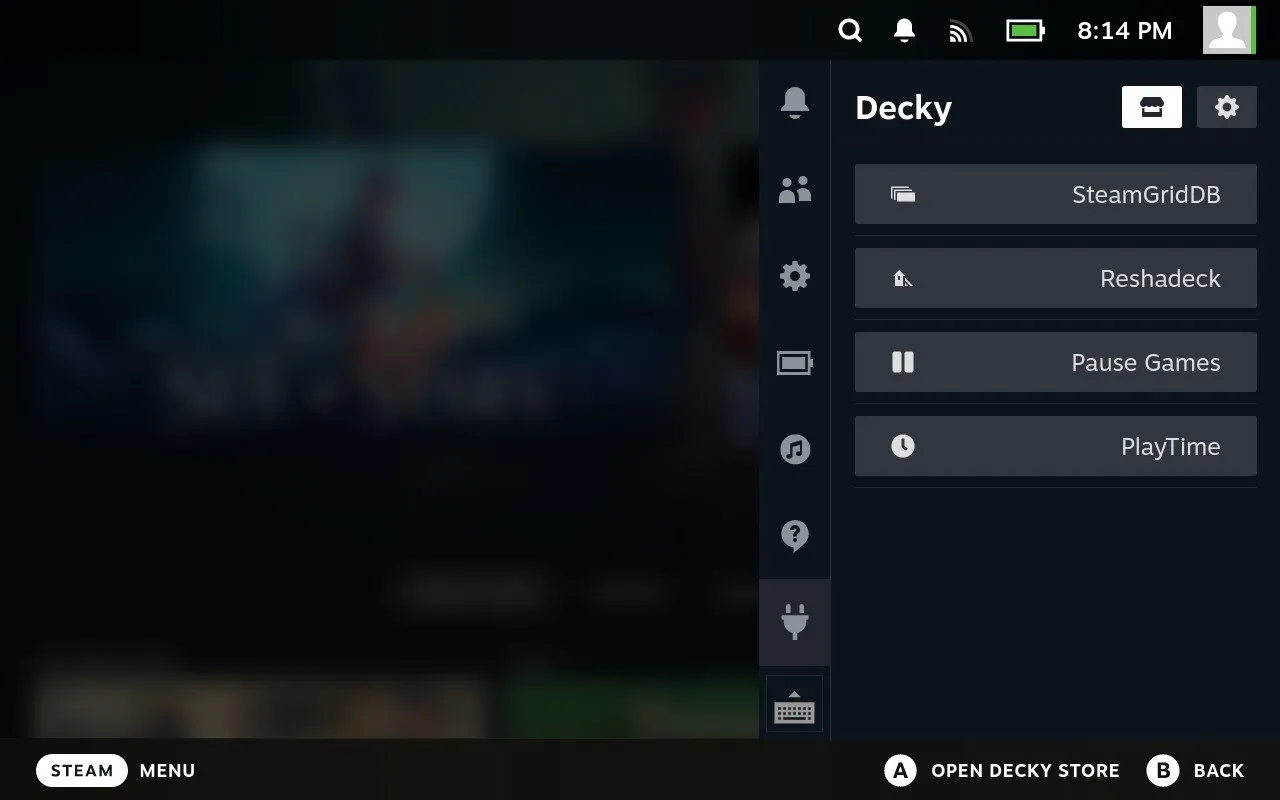As expansive as Valve is, they are unable to develop every single software feature that the community would like. They only have so many coders on staff and each new feature needs to go through expansive testing in order to assure it won’t crash on millions of Steam Decks. This is where the homebrew community comes into play and this is why Decky Loader is so useful.
So today I want to show you every step you need to follow in order to install Decky Loader on your Steam Deck.
What is Decky Loader?
The folks behind this project describe Decky Loader as a homebrew plugin launcher for the Steam Deck. There is an official website for Decky Loader where you can read more about it and it’s where they go into detail about all of the features the hosted plugins offer the community. And there are some great homebrew plugins for the Steam Deck that add some much-needed features to Steam OS.
But I’ll go over those a bit later.
Decky Loader offers community developers a way to distribute their work to anyone with the mod installed. The framework allows for the clean injection and loading of multiple plugins. Your newly installed plugins should stick around even after a new Steam OS update has been installed. And it allows for two-way communication between the plugin and the loader itself (which is great for checking compatibility and such).
Before we talk about plugins, though, let me show you how to install it.
Steam Deck Decky Loader Installation Guide
Terminal Install Method
I want to throw this out there quickly because I understand some people are familiar with the command line. So if that sounds like you, then you can execute the following command into Konsole (or a compatible terminal app) to download the installer and begin the installation process.
curl -L https://github.com/SteamDeckHomebrew/decky-installer/releases/latest/download/install_release.sh | shYou will be prompted to enter your admin password so the script can install everything properly. If you don’t have one set already, I have a Steam Deck Admin Password tutorial that will walk you through the process.
Traditional Install Method
If you’re like me, though, and would rather avoid the command line whenever possible, then installing Decky Loader is just as easy.
Step 1. Switch to Desktop Mode
We’re going to need to reboot the Steam Deck into Desktop Mode so the script can be downloaded via a web browser. Even if you have a browser added to Gaming Mode, we still need access to the full desktop environment in order to complete this guide. So press the Steam button, pick the Power option, and then select the Switch to Desktop option from within the menu.
Step 2. Download Decky Loader
The next step involves us opening up a web browser application. Firefox is usually present in the Taskbar when you first begin using Desktop Mode but you can always install Chrome (or another available browser) from the Discovery app.
Now you’re going to need to visit the official website or the Decky Loader GitHub project page. No matter which one you choose, you will find a Download button on the page that is linked to the latest version of the installer script. Once the file has been downloaded go ahead and move it to the desktop as well.
Note: Check the full name of the file you just downloaded to make sure it is named decky_installer.desktop.

Step 3. Install Decky Loader
With the file named correctly you can now double-click it from the desktop. You will be asked if you want to continue to load the script or cancel and back out. Click on Continue and you will see a prompt about a password.
If you have not yet set an admin password on your Steam Deck, Decky Loader will ask if it is okay that the script temporarily sets it to Decky!. If you accept this, the password will be set and the script will go on to complete the installation. It shouldn’t take long at all as there isn’t much to download or install here.
If you tell the script no, then it will be canceled and nothing will be installed.
However, if you had previously set an admin password then the script will need for you to confirm that before anything is installed. Decky Loader requires your Steam Deck to have an admin password setup (whether temporary or not) in order to install the plugin loading capabilities.
As long as you allow Decky Loader to be installed, the last part of the installation asks which version you want. Unless you’re having compatibility issues with the version of Steam OS you have installed, you’ll want to install the Release version of Decky Loader. But if you’re a developer or you want to bug test the latest features then you’ll want to choose the Prerelease version.

Step 4. Reboot and Test!
Whichever version you install, once it has been completed the only thing left is to reboot back into Gaming Mode. So find that icon on the desktop and double-click. After the Steam Deck has rebooted, press the 3-dot ellipsis button to bring up the Quick Settings menu.
If everything went smoothly then you will find a new icon at the very bottom of the menu. Decky Loader uses the typical plugin icon but upon going into this section you’ll notice there isn’t anything installed yet.
Installing the Homebrew App Store Decky Loader
How to Download and Install Decky Loader Plugins?
That’s because Decky Loader doesn’t come with any plugins installed out of the box. So tap the App Store icon in the top right corner of the menu to access the plugin repository. From here, scroll through the list and tap the Install button on any plugin that seems interesting to you.
A few that I can recommend trying out include Pause Game, SteamGridDB, and ReshaDeck. I already have an article on the website about how that last plugin helps fix an off-color fringing issue with certain OLED Steam Decks due to its sub-pixel layout.
Conclusion
Decky Loader is a great homebrew app store for Steam OS that can add a lot of useful features to your Steam Deck. Some of these plugins add features that fit so naturally into the operating system that it’s surprising Valve didn’t develop it themselves.
I wouldn’t be surprised, though, if one day we end up seeing some of these features adapted into Steam OS.
